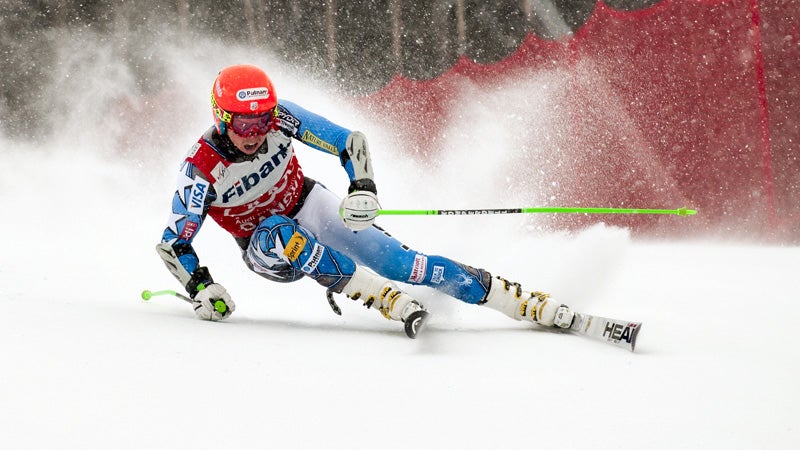Thousands of athletes will vie for Olympic gold next month at the 2014 Sochi Winter Olympic Games. And while success in each sport ultimately comes down to each individual, it definitely helps to be competing on the best gear in the world. Sometimes it can make all the difference. This is our roundup of the top equipment debuting at Sochi—one of these products might help the U.S. Olympic Team come home with gold.
Luge
How do you build a better luge? “We spied on the Germans,” admits Duncan Kennedy, manager of technical programs for . The team decided they needed to focus on upgrading the kufen—the steering mechanism that looks like the blade of a hockey stick located at the front of the sled—before heading to Sochi.
The team hired , a Michigan-based chemical company, to help build the new kufen. “We needed to build a kufen that was stiff enough for precision driving but soft enough to dampen vibration,” says Kennedy. The team stuck GoPro cameras underneath the sleds to observe vibration, then Dow Chemical came up with a carbon-fiber composite to satisfy the team’s needs.
And the results have been impressive. went from finishing around 20th to capturing four World Cup silver medals this season in the new sled. And that’s just the start. “Chris was sliding quite well, but he was sliding above his sled’s capabilities,” says Kennedy. “Now, with the new sled, he could really do some damage in Sochi.”
Speed Skating Suit
In speed skating, hundredths of a second can mean the difference between gold and finishing off the podium. To help the American team shave time, teamed up with , best known for building planes and missiles, to develop the most aerodynamic skin-tight suit on the market.
To do that, the development group placed mini-sensors on the skaters and sent them around the Olympic oval in Salt Lake City, capturing hundreds of metrics, including the way the athletes moved, their speed, and their body angles. They then created six models and placed them in a wind tunnel to determine which suit was most aerodynamic.
The result? A compression garment with dimples on the arms and the hood to disturb air and reduce drag, plus breathable mesh on the back to cool the skaters. The uniform is made with a material that hardens when injected into the suit, a technology called “flow molding” intended to reduce the number of air-catching seams.
How much faster is the new suit, which will debut in Sochi? Under Armour won’t say. But you can assume it will definitely help American athletes on their quest for gold.
“Our goal was to make a suit that made a difference over the course of a race. But we’ve found the suit is making a difference even over the course of a lap,” says Kevin Haley, Under Armour’s vice president of innovations.
Head Alpine Skis
What's the brand you’ll see most often on the feet of alpine ski racers at the Sochi Olympics? Head. , giving the brand nearly 1,000 more World Cup points than its closest competitor, Atomic.
Why? Well, part of the credit goes to , one of the brand’s top athletes. “We have the best giant slalom (GS) skis because we have the best input from the best athlete in the world,” says Ben Drummond, racing director and team manager at Head USA. “Ted knows what needs to be done to make a ski fast.”
Over the spring, Ligety will test 20 pairs of GS skis, homing in on the pairs he feel perform the best. The design Ligety picks as the fastest will then be used by every other Head athlete on the World Cup tour.
Of course technology also plays a role. The skis have a wood core fortified with sheets of metal. The sidewalls are built of phenol, a petroleum-based material that prevents the ski from twisting, something that allows skiers to put greater pressure on the ski without washing it out. When you’re going 70 mph on a downhill course, you need skis that arc turns, rather than slide out.
Hip-Tec Aerials Helmet
The most important technology used by the U.S. aerials team in Sochi is one you won’t be able to see. Inside the team’s helmets is something called , a proprietary combination of medium density EVA foam and soft EPS that dampens forces caused by high- and low-speed falls and rotational impacts by up to 65 percent.
The Truckee, California-based company worked with to develop the technology, which will debut at the Olympics. The best news? After the Games, Hip-Tec will be available in a number of consumer helmets—although the brands that will employ the technology are being kept quiet for now.
Prosthetic Snowboard Cross Limb
In 1994, lost her leg to cancer at age eight. But that hasn’t prevented her from competing in snowboard cross, an event that sends four racers bombing down a half-mile long obstacle course.
Roundy has medaled on the World Cup tour and is a Paralympic favorite at this year’s Games. The key to her success is a prosthetic limb called the . The $8,000 titanium and aluminum prosthesis uses rubber tendons on a circular joint to provide up to 40 degrees of knee bend, as well as an air pressure shock to help absorb the bumps and rolls of the course.
Roundy began using the prosthesis in November and says she’s gone from being able to feel every bump in the snow to having a smooth ride. “With the old prosthetics,” says Roundy, “if you went off a 20-foot jump and didn’t land it perfectly, you’d get thrown off the course. But the Bartlett Tendon Knee is more forgiving. It definitely allows you to be more aggressive.”


